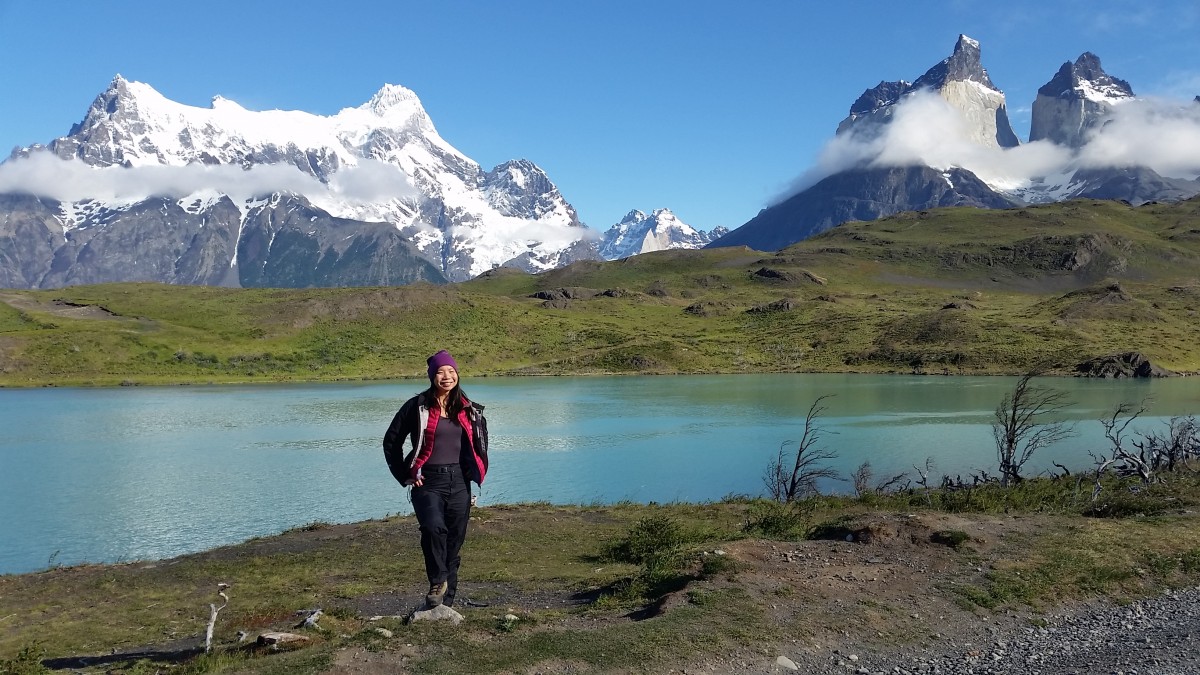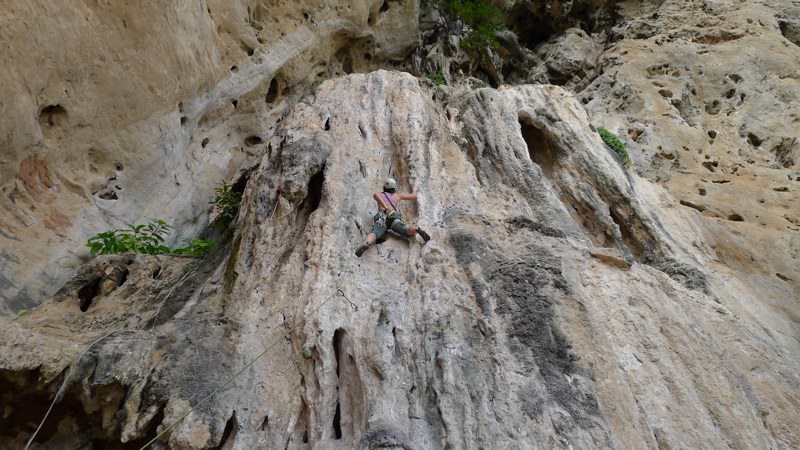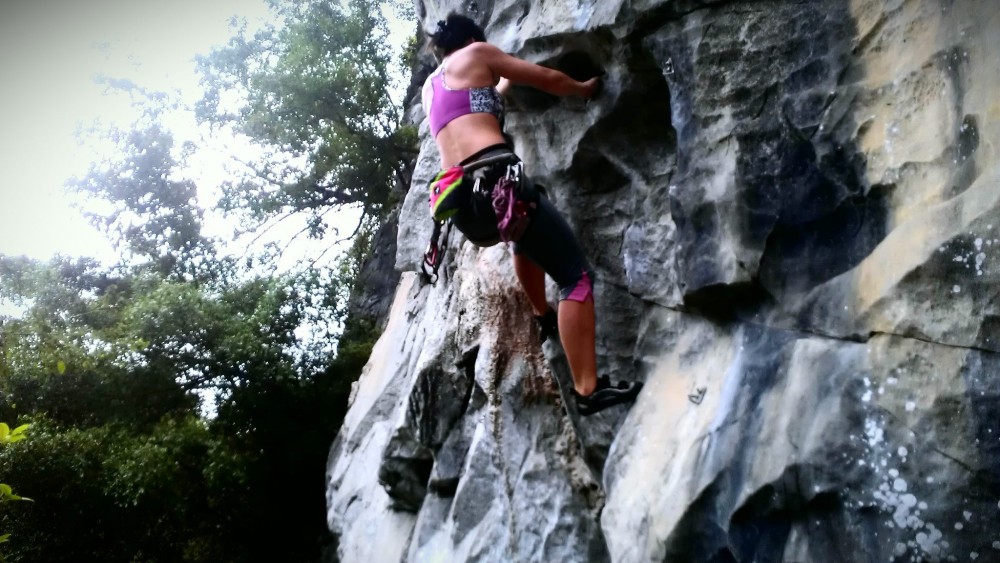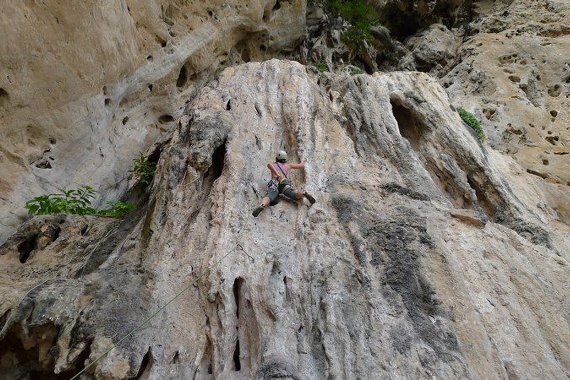Since the onset of its rich history, rock climbing and its participants have epitomized badassery par excellence. In the late 1880s, Walter Parry Haskett Smith made the first solo ascent of the Napes Needle in England, and climbing was thereafter heralded as an athletic sport in its own right.
I’ve always been drawn to the exploratory nature of climbing, from the first time I reached around cold, unfamiliar quartz conglomerate on a blind corner traverse, to the time I ascended 20 pitches to the summit of Mount Kenya via the Southeast face of Nelion. So it only seemed natural that my passion for discovery (and self-discovery) manifested itself in solo travel.

Solo travel combines the best of both worlds: autonomy and the ability to explore the world and everything in it—all on your own time, and in your own terms.
That’s not to say that solo travel is isolationist—quite the contrary. I’ve met some of the most extraordinary individuals and made some of my most meaningful friendships while on the road alone.
Solo travel and rock climbing may sound counter-intuitive (after all, the main premise of traditional rock climbing relies on the use of a belay partner), and even unsafe; however, when pursued prudently, it’s a valuable venture for climbers seeking the road less traveled.
Whether your next climbing destination is Kenya, Croatia, Malaysia, or Morocco, all you need are your rope and rack, some bravado, and a gusto for adventure.

With that said, here are 9 best practices to keep in mind
1. Climb prepared and bring your own gear and guidebook
Think of your climbing shoes, harness, rope, rack, ATC, PAS, locking biners, and most up-to-date guide as your trusty wingman or wingwoman when it comes to picking up potential climbing partners. The more prepared you are, the more likely you will be able to snag an attractive climbing partner.
2. Do your due diligence: pick your climbing partners wisely
It’s okay to pick them up at the apres-climb bar, but make sure (when you’re both sober) to test his/her lead belaying skills and overall climbing safety. Watch your new partner carefully as he/she belays you up to the first bolt, and then take some small, controlled falls to make sure he/she can catch them before you fully partner up with them.
3. Get your extrovert on
Charm the heck out of everyone you meet at the local climbing stomping grounds, such as hotels, cafes, bouldering gyms, and bars.
4. Support the local climbing community
Hire a guide or rent gear from a well-established climbing shop. The local and expat guides are chock full of beta, and may even be able to hook you up with potential climbing partners who are looking to climb on their days off from guiding, or other solo travel climbers.
5. Practice presence
Cherish the warmth of the apres-climb mate you’ve wrapped your hands around after on-sighting a hard sport route in Patagonia. Feel the fierce Croatian sun on your shirtless back while you clip. Bathe in the bliss of the Tonsai sand underneath your toes.
6. Let your inner voice guide you: trust your gut; listen to your instincts
Whichever way you word it, it’s all about proactively practicing what makes you feel safe and protected. If something tells you that staying in the $2/night hostel in a dodgy neighborhood with no locks is not quite right, or that you shouldn’t rent that rope with a snag in it, or accept that tempting cocktail from the handsome stranger you just met and know nothing about, then you’re likely right. Do what feels right.
7. Get out of your comfort zone
This is not to contradict the aforementioned lesson around leveraging your street smarts and common sense, but rather to encourage boldness and discovery and uncovering. Feeling shy? Strike up a conversation with friendly female locals or fellow travelers! Order from Seamless every night? Take a cooking class abroad!
8. Rest up, power up
Rest days, much like rest stances, are key to maximizing your time on the rock and minimizing forearm pump. Go for a hike or a swim, hang with locals, read a book or get your blog on!
9. Feel assured, get insured
American Alpine Club members receive $5,000 in Trailhead Rescue benefits, which can be used for international coverage for rescue and evacuation by or under the direction of Global Rescue personnel. This covers all human-powered activities like climbing, hiking, mountaineering, etc. and is one more way to be prepared in an emergency when traveling overseas. For more info, visit American Alpine Club’s Global Rescue Page.

Want more climbing content? Get our awesome climbing newsletter, delivered weekly.
Explore more
- Our 40+ most popular articles ever
- Today’s Best Rock Climbing Gear Deals
- 200+ rock climbing videos
- A Tale of 10,000 Crags: Guide for How (and Where) to Rock Climb in Spain
- “I Will Climb, Too” — A Story on Mentorship and Responsible Climbing
- 6 Tips for Dirtbaggin with Your Dog
- Essay: Looking for a Partner, Pants Off Limits
- Dirtbag Tricks: Camping for (Almost) Free
- Get daily updates by Liking us on Facebook
- Free rock climbing PDFs on technique, training, knots, and more








